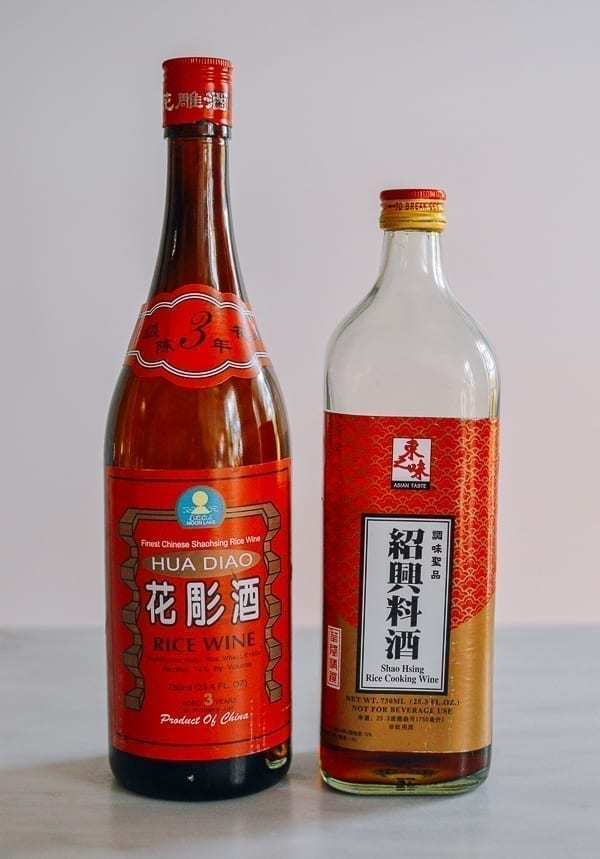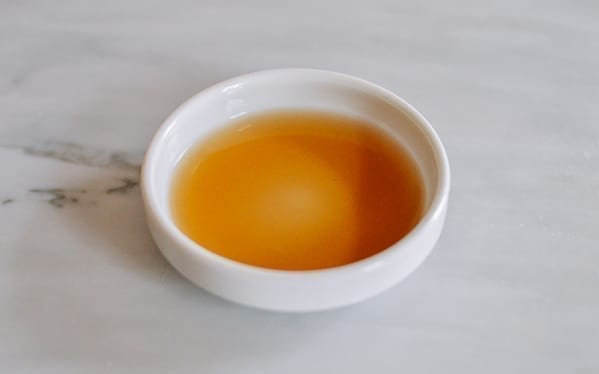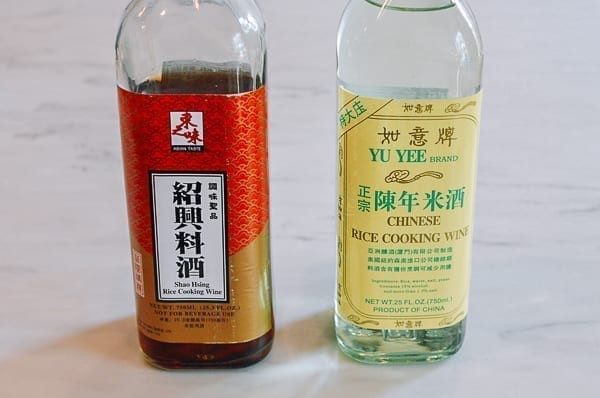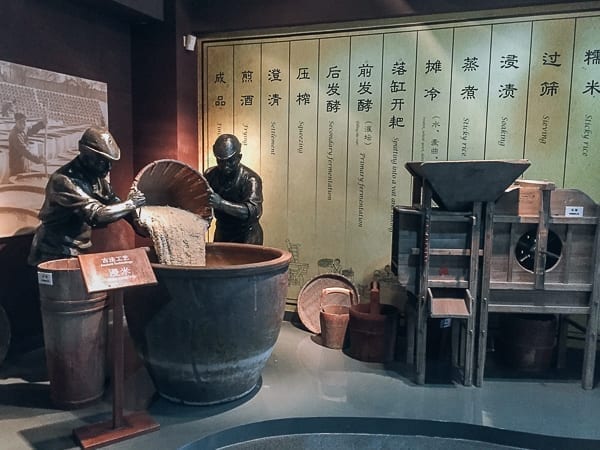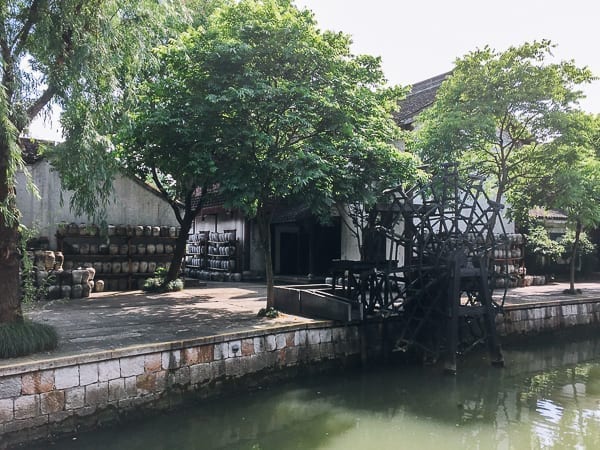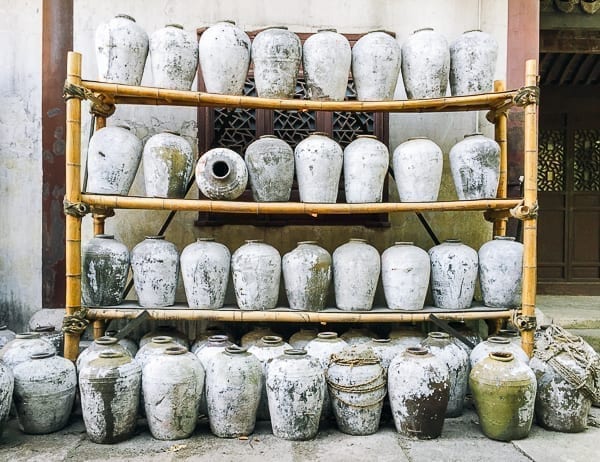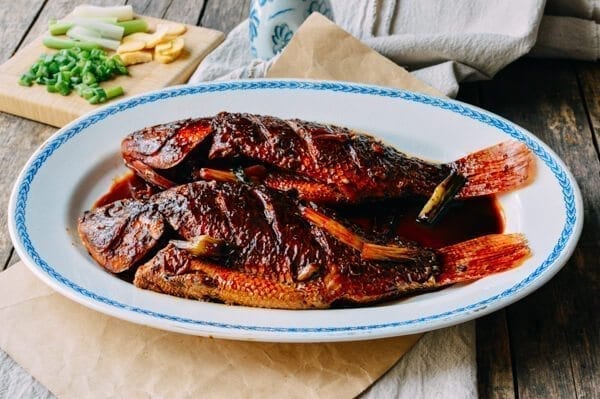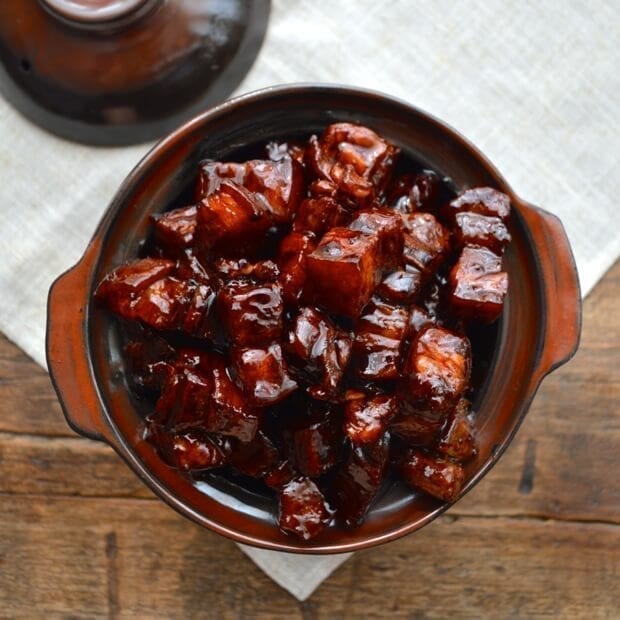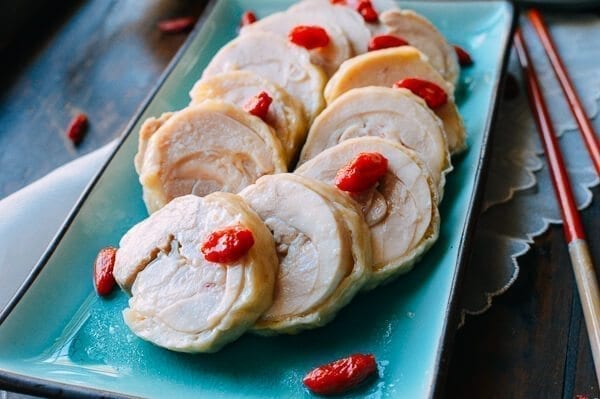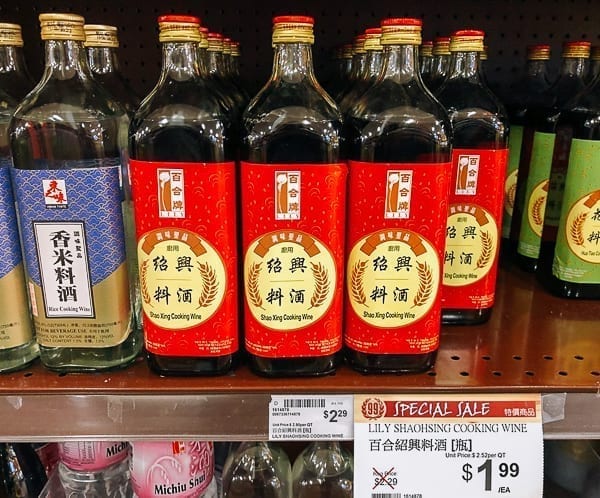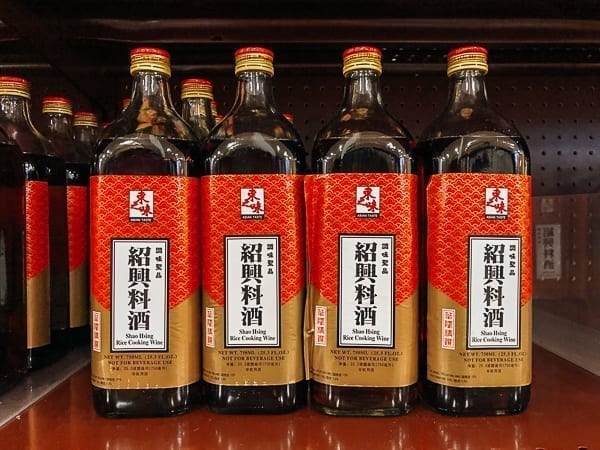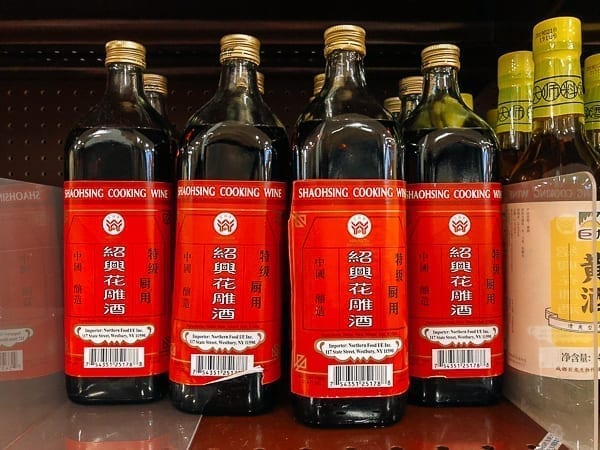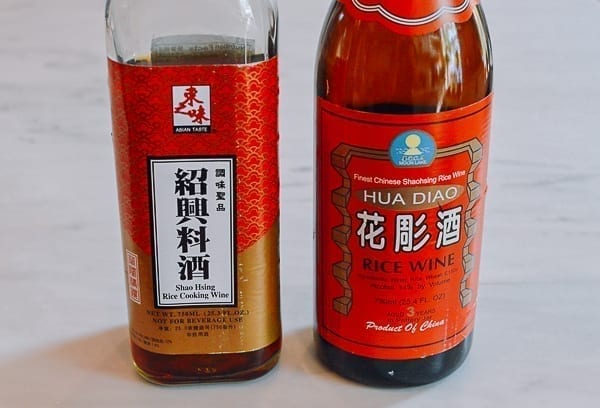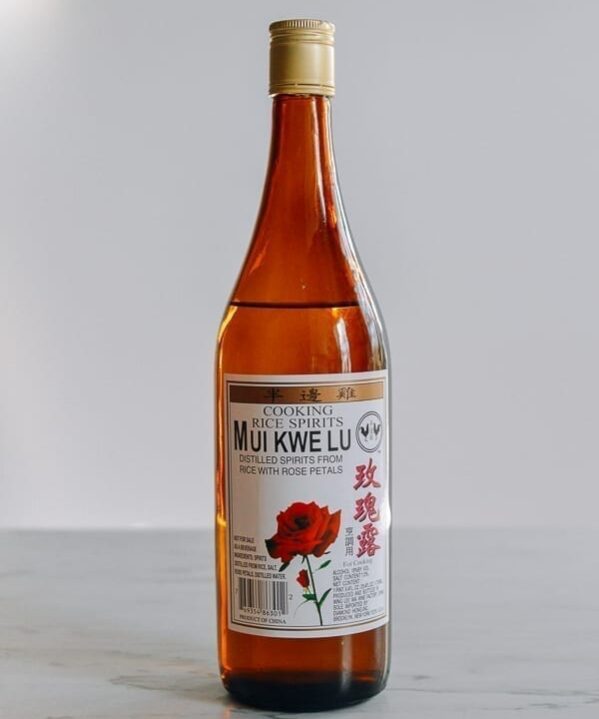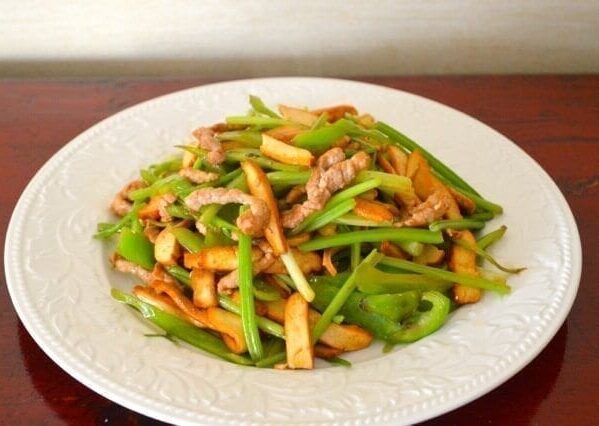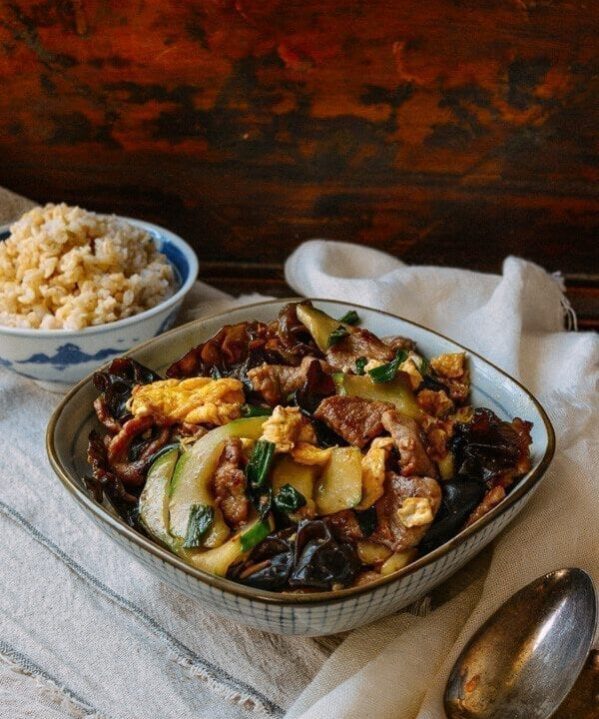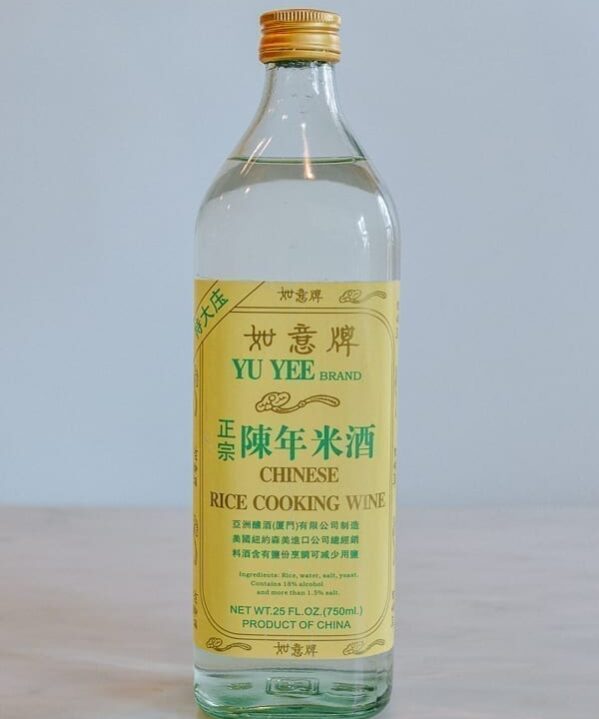Shaoxing wine is perhaps the most common ingredient on The Woks of Life that you’ve never heard of. If you’ve ever wondered why your homemade Chinese food doesn’t taste like what you’d get at a restaurant, Shaoxing wine may be the key missing element!
We call for Shaoxing wine in many recipes, from stir-fries to dumplings and wontons, and it’s another cornerstone ingredient found in our list of 10 Essential Chinese Pantry Ingredients.
But what is Shaoxing wine? Where can you buy it? Are there any substitutions for it? We’ll cover that and more in this quick article.
What Is Shaoxing Wine?
Shaoxing wine, or shàoxīng jiǔ (绍兴酒), is a type of Chinese rice wine that hails from Shaoxing, a city in China’s Zhejiang Province famous for rice wine production. It’s a key ingredient in many dishes and will create that authentic restaurant flavor you may have found difficult to replicate at home.
With early records mentioning it over 2000 years ago, Shaoxing Wine is one of the oldest forms of rice wine in China. The production process involves fermenting rice, water, and a small amount of wheat (note that it does contain wheat, so it is not gluten-free. If you are gluten-intolerant, check out the substitutions section towards the end of this post). Clear rather than cloudy, it has a dark amber color, with a mildly sweet, fragrant aroma.
Aged Shaoxing wine can be consumed as a beverage, usually warmed beforehand. For cooking, however, we use lower grade Shaoxing wine with added salt to 1) avoid an alcohol tax and 2) allow it to be sold in regular grocery stores.
This amber-colored rice wine differs from clear rice cooking wine, or mǐjiǔ (米酒), in that it has a more complex and deeper taste. Comparing the lighter flavor of rice wine vs. Shaoxing wine is like the difference between using salt or light soy sauce. One is more purely salty, while the other adds a richer flavor.
We’ve actually visited the city of Shaoxing in China to learn more about ancient wine production! In a couple of the photos below, you can see the style of the clay jars that used to store wine.
Alternate Names & Spellings
Shaoxing wine is also sometimes called hua diao wine (huādiāo jiǔ, 花雕酒), which translates to “carved flower wine” to describe the flower design carved into the clay jars once used to store and age it.
This alternate name can also be spelled, “hua tiao chiew” (remnants of an old 19th Century romanization system for Chinese called Wade-Giles.)
Chia Fan wine (jiā fàn jiǔ, 加饭酒) is another name you may see on some bottles. It is similar to hua diao wine. These Shaoxing wines are made using more rice during the brewing process, hence the name chia fan, which literally means “add rice.”
There are also alternate spellings, including “shao xing wine” or “shaohsing wine.” All are the same type of cooking wine.
How Is It Used?
Just like using wine in Western dishes, Shaoxing wine adds depth and flavor complexity. We use it in marinades for meats, as a flavor agent in wonton or dumpling fillings, to deglaze our wok and add flavor to stir-fries, and to add flavor to sauces and braises. We’d go so far as to say that the vast majority of our savory recipes contain Shaoxing wine.
Shaoxing Wine is particularly essential for hong shao or red-cooked dishes like Chinese Braised Fish (Hong Shao Yu) and Shanghai Style Braised pork belly (Hong Shao Rou). It appears in larger quantities in braised dishes, (our braised fish recipe calls for 3/4 cup!), while a marinade or stir-fry usually contains only a tablespoon or two.
It is also the star of a traditional cold appetizer aptly named, “Drunken Chicken,” in which the chicken is cooked and then soaked in a brine of Shaoxing wine and other seasonings. This “drunken” brining method can also applied to seafood, like shrimp and crab.
Again, there are types of high quality Shaoxing wine made for drinking (usually served warm), but in the U.S., salt is added to the wine to avoid alcohol taxes and to permit it to be sold in stores where regular wine/liquor cannot be sold. The flavor of the wine sold in most grocery stores for cooking is therefore briny and not meant for drinking!
Buying & Storing
Shaoxing wine can be commonly found at any Chinese grocery store, and there are quite a few brands. Most of them come in a red bottle (one brand seems to have created the design and others followed suit).
The bottom line is to buy, try, and switch if you’re not happy. Often, we’ll buy a regular sized bottle as well as the gallon jugs at our local market to refill that smaller bottle, since we use so much. It’s economical and keeps well in the pantry.
Just put it in a cool, dark place and keep it sealed. It will keep in the pantry for up to 6 months, in our experience. If you don’t use it as often, you can refrigerate it to keep it longer.
As for quality and price, the general rule is, the more expensive the wine, the higher quality it is (less briny, more flavor). Use higher quality hua diao Shaoxing wine for dishes like Chinese Drunken Chicken where the taste of the wine is very important to the dish.
As you can see, the bottle of Shaoxing wine in the photo below costs about $5 (considered expensive). You can get a cheap bottle of Shaoxing wine for everyday cooking at just $2.
We often keep two different bottles in our pantry, one for everyday cooking (left) and one for special uses (right).
Substitutions for Shaoxing Wine
“Is there a substitute for the Shaoxing wine?” is one of the most common questions we get on the blog.
If you want to cook Chinese dishes often at home, we highly suggest you get to your nearest Chinese market to buy a bottle (it can also be purchased online, albeit at double or triple the price of buying it in a store), because you’ll use it in the vast majority of the dishes you cook, and its flavor makes all the difference.
However, if you truly can’t locate it or want a quick substitution for a one-time cooking experiment, the most common substitute we recommend is dry cooking sherry, which is readily available in any supermarket.
If you have it on hand, you could also substitute any other Chinese rice wine. In small amounts, you can also substitute Japanese/Korean wines such as soju or sake. We’re hesitant to suggest substituting a more commonly found Japanese rice wine seasoning called mirin, but it can be used in a pinch. Just know that the dish will not taste authentically Chinese, and you should cut out any sugar called for in the recipe, as mirin is much sweeter than Shaoxing wine.
Non-Alcoholic Substitute for Shaoxing Wine
Most of the alcohol in the wine cooks off during the high heat cooking process (in the case of stir-fries) or the long cooking process (in the case of braises).
However, if you can’t consume alcohol for health, religious, or personal reasons, the most common non-alcoholic substitution we recommend in a stir-fry or sauce application (in amounts equal to or less than 2 tablespoons) is chicken, mushroom, or vegetable stock.
You could also try a non-alcoholic beer or non-alcoholic white wine, though these products may contain trace amounts of alcohol.
In recipes where Shaoxing wine is used in amounts less than 1 tablespoon, you can feel free to omit it.
Other substitutions will depend on the situation, but you can always ask us in the comments for any particular recipe!
Our Favorite Dishes That Use This Ingredient:
- Drunken Chicken
- Chinese Braised Fish
- Shanghai Style Braised Pork Belly (Red Cooked Pork)
- Three Cup Chicken
- Instant Pot Pork Belly
- The Only Dumpling Recipe You’ll Ever Need
- Pork Rib Stew
If you have further questions about Shaoxing wine, let us know in the comments––we try to answer every single one.
Substitutions for Shaoxing Wine
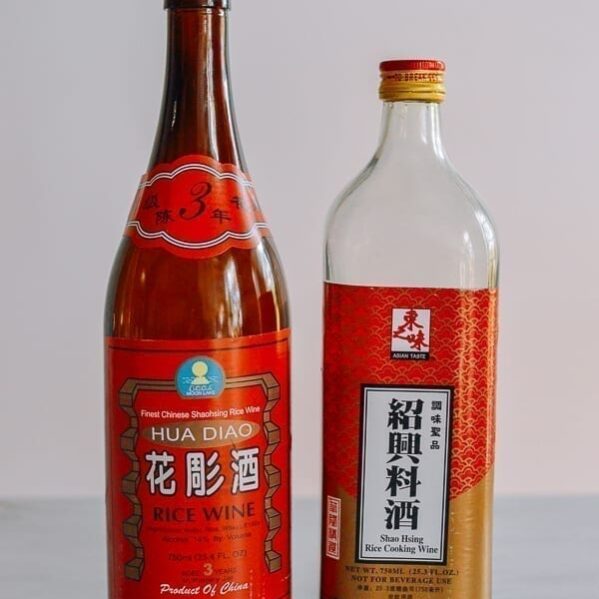
Ingredients
Shaoxing wine substitutes:
- Any Chinese rice wine (such as clear rice wine or mi chiu/mijiu)
- Dry cooking sherry
- Korean rice wine (cooking wine)
- Mirin (reduce sugar in recipe if using mirin, as it is quite sweet)
- Sake (Japanese rice wine, usually meant for drinking)
- Soju (a Korean distilled beverage usually made from rice, wheat, or barley)
Non-alcoholic Shaoxing wine substitutes:
- Chicken stock
- Vegetable stock
- Mushroom stock
- Pork stock
- Beef stock
- Non-alcoholic beer
- Non-alcoholic white wine
Instructions
- Any of the above substitutes can replace Shaoxing wine in a 1:1 ratio, as long as the amounts called for in the recipe are less than 2 tablespoons. If using mirin, reduce the sugar in the recipe, as it is quite sweet.
- The closest substitutes above are alternative Chinese rice wines (such as mi jiu) and dry coking sherry.
